"Private traders" in space
25 this May, around six o'clock in the evening Moscow time, the first docking of the International Space Station and SpaceX Dragon, a spacecraft developed by a private company, occurred. This event was the cause of the mass of accolades and the most daring assumptions about the future of world space exploration. According to most experts and amateurs of this field of human activity, attracting private finances and efforts to astronautics will give it an excellent impetus. It should be noted that such fabrications have been walking around the world for ten years, if not more. But it was the launch of the Dragon truck into orbit followed by docking became the event that turned simple guesses into very realistic versions. In the light of such a change in attitudes, we can expect the successful completion of other commercial projects in the field of astronautics.
SpaceShipOne
The very first private project of a spacecraft called SpaceShipOne was created by Scaled Compositer LLS since the end of the nineties. The development of this device for suborbital flights was, including, to participate in the competition Ansari X-Prize. To obtain the latter, the device had to make two suborbital flights in two weeks and return to Earth.
Due to the peculiarities of the proposed flight, SpaceShipOne received a distinctive appearance. Aerodynamically, it is a tailless aircraft with vertical keels carried back. At the same time, unlike the overwhelming majority of other tailless ones, there is a horizontal plumage on the keels. This fact at one time brought a lot of excitement to people who tried to fit SpaceShipOne into the existing classification of layouts. A specially designed hybrid rocket engine was placed in the rear fuselage. The small dimensions and requirements for the RDG have led to the search for a new non-standard fuel. As a result, the fuel pair polybutadiene - nitric oxide was chosen. The polybutadiene block is located in the combustion chamber, and when the engine is started, an oxidizer is supplied to the chamber.
In addition to the unusual power plant of the ship, the course of its flight is also interesting. Takeoff from a conventional runway of sufficient length is made using a specially designed WhiteKnight aircraft. The plane of the original design raises the spacecraft to a height of 14 kilometers, after which there is an uncoupling. Then SpaceshipOne, flying by inertia, goes to the required angle of attack and its pilot starts the engine. Within a minute with a small hybrid rocket engine provides thrust of the order of 7500 kgf. During acceleration, the suborbital apparatus reaches a speed slightly higher than M = 3, which is clearly not enough to go into orbit. However, after turning off the engine at an altitude of about 50 kilometers of vehicle speed is enough to continue the flight along a ballistic trajectory. By inertia, SpaceShipOne rises to the maximum flight altitude - about 100 kilometers - where there are three minutes. After the speed of the ship is insufficient to continue to be in space, the descent begins. Interestingly, at the beginning of a descent, the rear part of the wings of the vehicle, together with the keels and stabilizers mounted on it, rises by a considerable angle. This is done in order to increase air resistance and reduce the speed of descent. At an altitude of 17 kilometers, the wings return to their original position and SpaceShipOne plans to land on the airfield.
The first test flight of the suborbital apparatus took place on May 20 of the year 2003. Then WhiteKnight raised the prototype to a height of more than 14 kilometers. A year later, more than two manned flights took place, which brought the creators of the project the deserved glory and the X-Prize Foundation prize. 29 September 2004 pilot M. Melville brought an experienced SpaceShipOne to an altitude of 102,93 kilometers. Just five days later, pilot B. Binnie made the second valid ascent into space, reaching 112 kilometers. For two manned suborbital flights within two weeks (actually one), Scaled Compositer LLS received a premium of ten million dollars.
SpaceShip Two
The SpaceShip One project was certainly successful and successful. But only three cabin seats made the commercial prospects of this project very doubtful. It was necessary to significantly revise the design in order to bring the ship's carrying capacity to a more successful look. To do this, almost immediately after receiving the Ansari X-Prize award, Scaled Compositer LLS launched a new project - SpaceShipTwo (SS2).
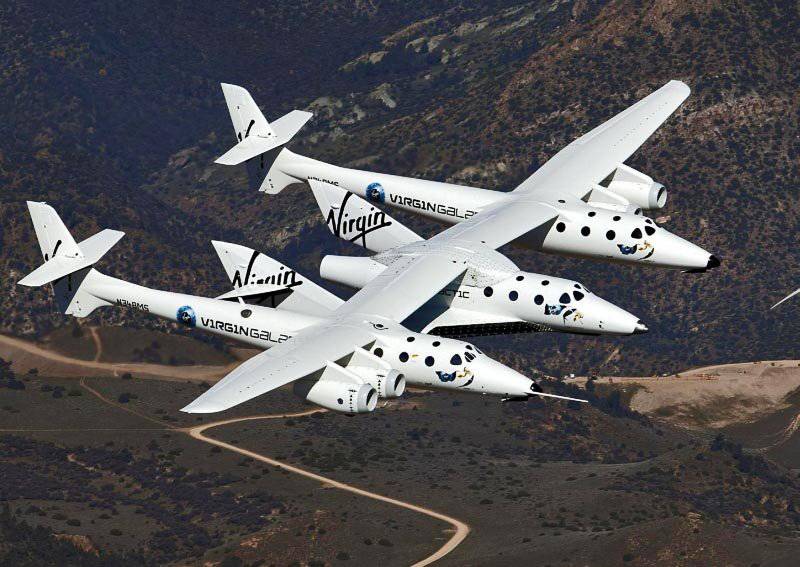
By design, the second version of the Space Thorn is to some extent similar to the first. However, the new requirements for capacity could not affect the layout. So, I had to change the size of the fuselage, rearrange it and change the location of the wing. Unlike the highplane SpaceShipOne, the SS2 is a low plane: its wing is attached to the bottom of the fuselage. This was done to improve flight performance in the dense layers of the atmosphere and improve thermal stability during descent. Finally, the shape of the keels and stabilizers was changed. With regard to the system of lifting the wings, this method of reducing the speed of descent was found to be completely successful and acceptable for use in the new project. The same thing happened with the type of propulsion system, although the change in the mass and dimensional parameters of the apparatus led to the development of a new GRD.
The flight procedure for SpaceShipTwo is generally similar to the process of the first version of the device. The only difference is in the type of carrier aircraft - the WhiteKnight II was developed for the SS2, which has a different fuselage layout and new turbojet engines. According to the main construct of the project B. Rutan, SS2 is able to rise to an altitude up to 300 kilometers, although in practice this data has not yet been confirmed.
Tests of various subroutines of the SpaceShipTwo project were far from simple. Thus, the new design of the device needed, among other things, a new thermal protection. But the most difficult work related to the new hybrid engine more power. 26 July 2007 at the Mojave Airport Test Center during the engine test a tragedy occurred. The tank with 4,5 tons of oxidizer could not stand the pressure and exploded. Scattered metal fragments killed three people and three more were injured of varying degrees of severity. Fortunately, the wounded received the necessary assistance on time and were able to return to active life in a few weeks.
The first test flight of the first prototype SS2, which received its own name VSS Enterprise, took place on 22 March 2010. As in the case of the first SpaceShip, during this flight an experienced ship was docked all the time to the aircraft carrier. The next few months were spent on unmanned transports and inspection of all onboard systems. In mid-July of the same year, the SS2 first flew with the crew aboard. Two pilots once again checked the operation of communication, navigation and control systems. Three months later, the first detachment of the Enterprise was carried out, followed by a planning descent. Due to some financial and technical reasons, the first suborbital flight planned for 2011 year with the intersection of the lower boundary of space did not take place. Moreover, last fall it was necessary to temporarily suspend test flights for an indefinite period. Currently, it is planned to resume testing this summer.
For obvious reasons, it is too early to talk about the commercial prospects of SpaceShipTwo. The tests have not yet been completed and the device has never been in space. But now the management of the development company claims that in the near future five SS2 and two WhiteKnight II will be built. In addition, back in 2009, Scaled Compositer LLS offered to book seats for tourist flights. For the ticket asked 200 thousands of US dollars. However, even three years after the start of recording clients, the first of them could not climb into outer space.
Spacex dragon
More successful than the SS2 was the SpaceX Dragon project. However, unlike the programs of the company Scaled Compositer LLS, it was created with the support of NASA. In addition, he has other goals. Unlike a purely tourist SpaceShip, the “Dragon” is a return vehicle designed to deliver payloads to space stations.
It is the features of the application that caused the characteristic appearance and constructive division of the Dragon apparatus. It consists of two parts - a cylindrical apparatus-cargo and cargo in the form of a truncated cone. Inside the ship there is a sealed volume in 14 cubic meters and another 10 does not have protection against air leaks. The apparatus is placed into orbit using the Falcon-9 launch vehicle.
The first test flight of the "Dragon" took place on December 8 2010. The launch vehicle took off from the Kennedy Center launch site and put the device into orbit. Dragon made two orbits around the Earth and went down. The landing of the descent capsule occurred in the Pacific Ocean, not far from the American coast. A year and a half later, in May of 2012, the first full-fledged launch of Dragon was held. The apparatus put into orbit successfully approached the ISS and was docked to it. It is noteworthy that of the possible six tons of payload, the Dragon delivered only 520 kilograms to the ISS. This difference in weight is attributed by project managers to the need for additional verification of systems and unwillingness to risk a heavy load of great importance. Dragon brought to the ISS, as they are called, optional items.
In the near future, SpaceX intends to complete the receipt of all documents necessary for the operation of the ship. After that, it will be possible to launch a full commercial operation. Although, as they say in SpaceX, the first time their creation will work exclusively on the delivery of cargo to the ISS. In a more distant future, a manned Red Dragon will be created on the basis of the “Dragon”, designed for a flight to Mars. But the development of this option is still in its infancy.
CST-100
In addition to small companies, the creation of commercial spacecraft and giants aviation industry. Since 2009, Boeing has been working on the CST-100 project. In the winter of 2010, NASA joined the development of the project, although its participation is to help in research and taking on a small part of the funding. The aim of the CST-100 project is to create a new spacecraft for putting goods and people into orbit. In the future, an apparatus capable of launching seven people into space should become, to some extent, the successor of the Shuttles.
For obvious reasons, the technical details of the project are still largely unknown. Nevertheless, the specialists of Boeing have already published some nuances of the appearance of the future spacecraft. With a total mass of about 10 tons and a hull diameter up to 4,5 meters, it will be delivered to orbit using an Atlas V launch vehicle. The descent is planned to be carried out using the same methodology used for the descent of Dragon or Russian Soyuz. On the basis of CST-100, it is planned to create several devices for various purposes, designed to bring cargo and people into space.
Currently being tested various systems and components of the future ship. The first flight of CST-100 is scheduled for 2015 year. In total for 15 year it is supposed to make three starts. During the first, the vehicle will be put into orbit automatically. Then the second unmanned ship will take part in the rescue system samples, and only in the third flight aboard the CST-100 will be people. Commercial use of the new spacecraft will be launched only in the 2016 year, subject to the absence of serious problems during testing.
Tycho Brahe
All projects described above have one common feature. They are developed by quite large organizations. As it turned out, to participate in the space race of private projects the company does not necessarily have to be such. Thus, the design office of Copenhagen Suborbitals consists of only two people - this is Christian von Bengtson and Peter Madsen. They are assisted by 17 enthusiasts who participate in the assembly of all project components. The space program "Tycho Brahe" is named after the Danish astronomer of the Renaissance. The goal of the astronomer project is to build a rocket and space complex for suborbital flights.
The Tycho Brahe complex consists of a rocket launcher, coupled with the HEAT-1X booster rocket and an MSC (MicroSpaceCraft) capsule. Rocket with a hybrid engine has an unusual size for this class of technology. Thus, the diameter of the HEAT-1X has a diameter of just 25 inches (centimeter 64). It is not difficult to guess that the habitable capsule is also made in small dimensions. The MSC capsule is a sealed tube with a glass nose. As conceived by the designers, the capsule should be displayed to a height of the order of 100 kilometers using a rocket. At the final stage of the flight, the rocket and the capsule go into motion along a ballistic trajectory. The descent is supposed to be made with the help of aerodynamic brakes, a parachute and a number of other equipment. Due to the small dimensions of the descent vehicle there are serious doubts about the feasibility of a safe descent.
The first launch of a rocket with a mass-sized human simulator was scheduled for September 5 2010. A few hours before the appointed time, it was canceled. During one of the last checks of the systems, it turned out that there were problems with the heating of the oxidizer supply valve. Due to the specifics of the project, the heating of this part had to be carried out with the help of an ordinary household dryer, even if it was powerful. Improvements dragged on until early June last year. But even then there were problems, this time with the ignition system. Fortunately, it was quickly corrected and on June 3, the HEAT-1X rocket finally lifted the MSC into the air. According to the flight plan, the rocket was supposed to rise to a height of about 2,8 kilometer, and then reset the fairing and the MSC module. The latter was to descend by parachute. The exit to the calculated height and the shooting of the module with a dummy were successful. But the landing parachute lines got tangled. The apparatus fell into the Baltic Sea.
After the first trial run, the staff of Copenhagen Suborbitals came to the conclusion that a lot of improvements were needed. Actually, this is exactly what all two dozen enthusiasts are doing now. Tycho Brahe seems to have many drawbacks. This assumption is supported by the fact that a year after the first not quite successful flight of the complex, the authors of the project are in no hurry to share information about the date of the next launch. Obviously, a group of enterprising citizens are not yet able to bring their designs to mind. However, at the present time, Tycho Brahe is the only European private space project that has at least reached the testing stage.
On the materials of the sites:
http://scaled.com/
http://spacex.com/
http://boeing.com/
http://copenhagensuborbitals.com/
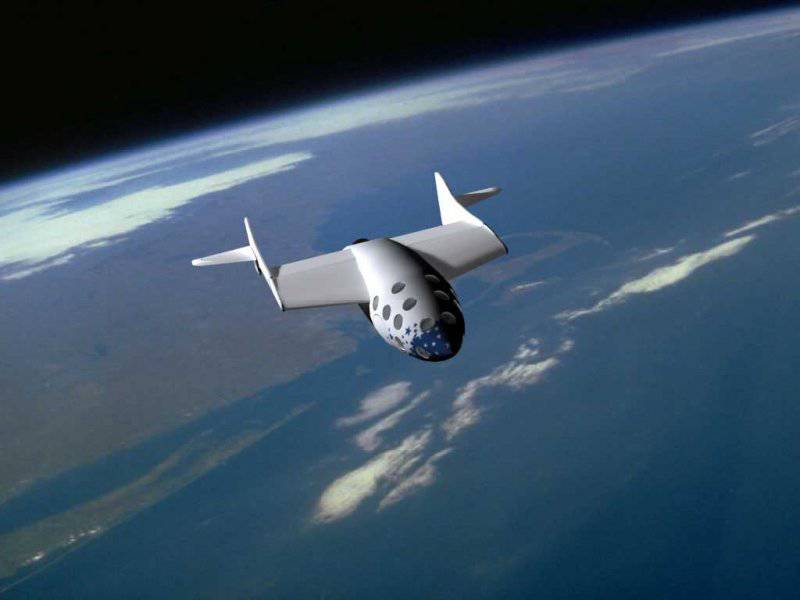
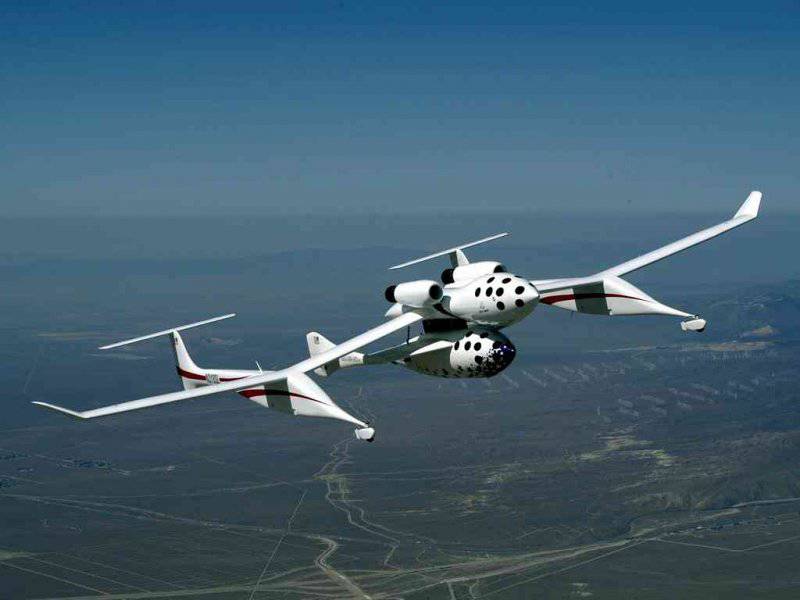
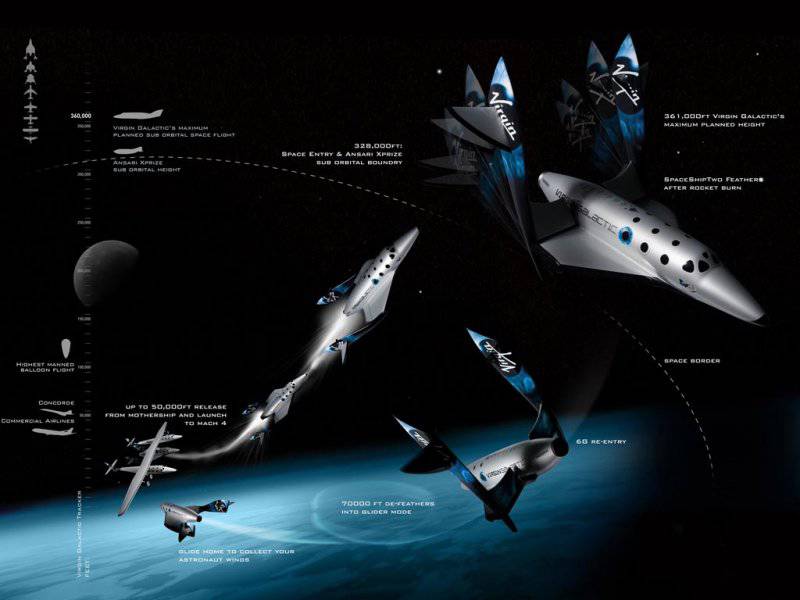
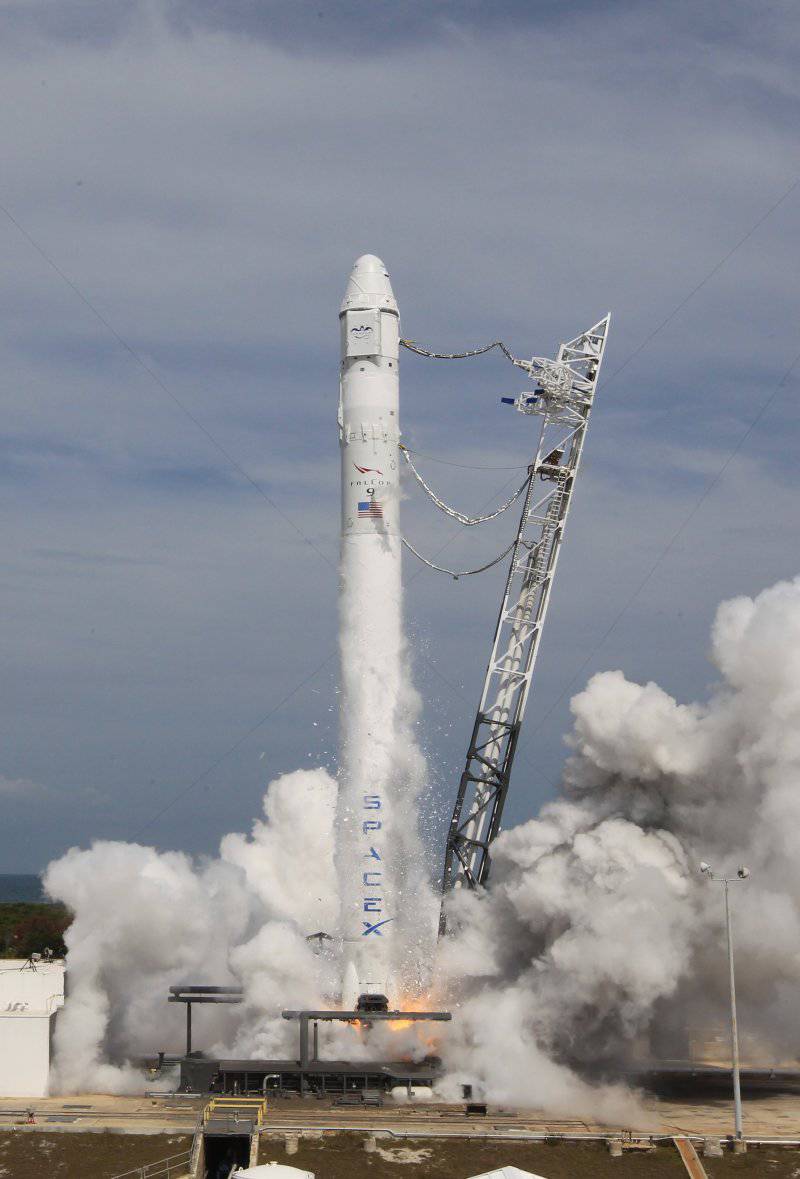
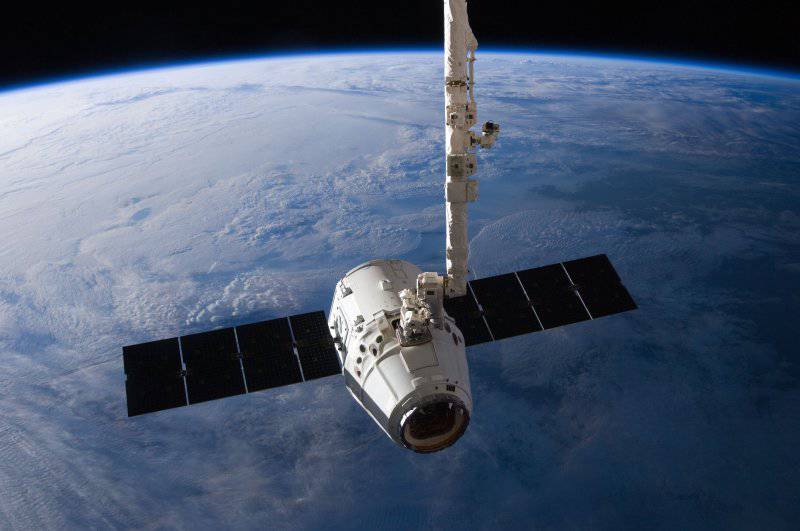
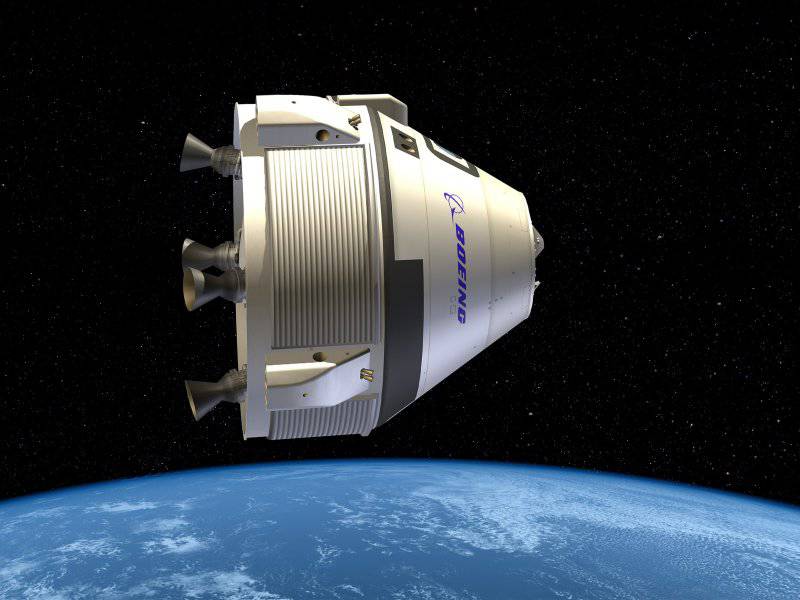
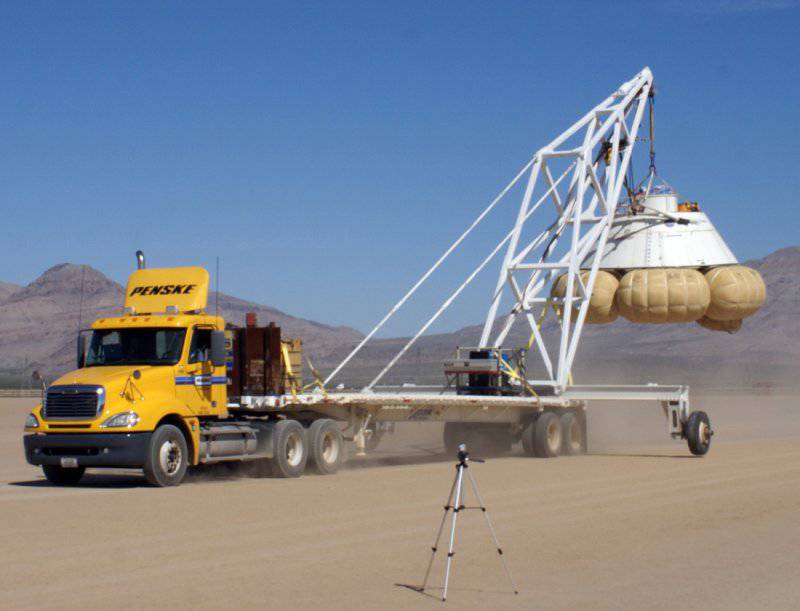
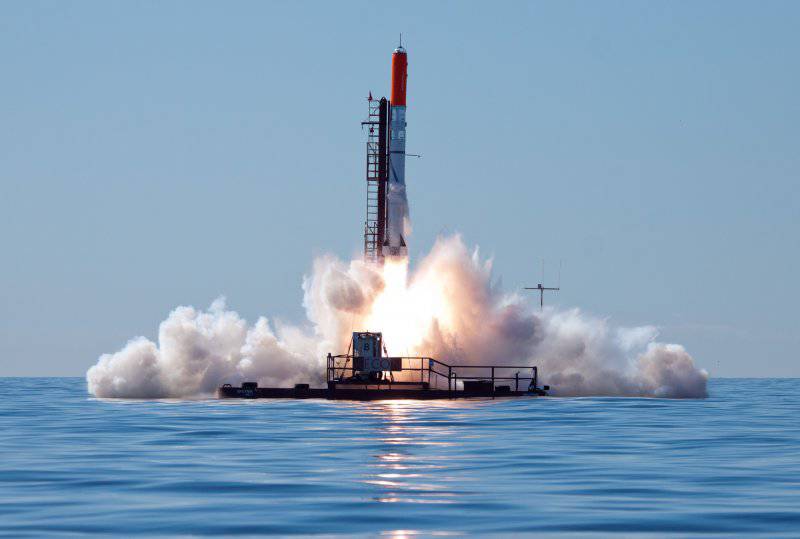
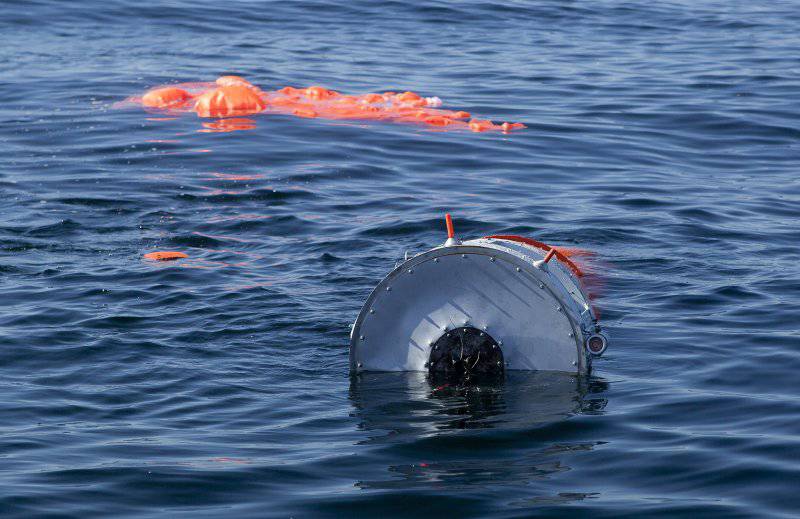
Information